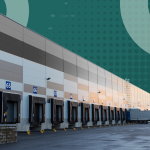What if the roads we drive on could last longer, cost less to maintain, and actively help the planet? From recycled materials and smart traffic systems to cleaner vehicle fleets, the way we think about transportation infrastructure is changing.
Cities and states are testing technologies that promise reduced emissions, lower long-term costs, and safer travel, but progress comes with trade-offs. Balancing innovation with practical implementation is the challenge that will define how quickly eco-friendly roads and cleaner vehicles move from pilot projects to everyday reality.
The Hidden Price Tag of Green Roads
Upfront Costs vs. Long-Term Savings
Switching from traditional asphalt and concrete to eco-friendly alternatives often comes with a noticeable bump in the initial bill. For example, permeable concrete, which allows water to filter through and reduces runoff, can cost 20–50% more than standard concrete.
Asphalt made with recycled plastics or rubberized materials offers environmental benefits but requires specialized processing equipment that some contractors don’t yet have. For municipalities, these higher upfront costs can be a tough sell, especially when budgets are tight and competing infrastructure needs demand attention.
The flip side is that many of these materials pay off over time. Permeable pavements can reduce the need for expensive stormwater management systems, saving cities millions in drainage infrastructure costs.
Recycled asphalt can extend road life and lower maintenance expenses because it’s more resilient against cracking. In other words, the investment gap often closes over the road’s lifespan, but the challenge is getting decision-makers and taxpayers to think in decades instead of election cycles.
Non-Monetary Costs
The “cost” of green roads isn’t just about dollars. It’s also about time, expertise, and disruption. New materials and technologies often come with a learning curve for contractors, requiring specialized training that can slow down projects.
As an example, installing solar-integrated road panels isn’t the same as laying asphalt. It involves electrical work, different maintenance schedules, and new safety protocols. This can lead to longer project timelines, especially in the early stages of adoption.
Supply chains also need to catch up. Some eco-friendly materials are only manufactured in limited regions, meaning they must be shipped long distances before they can be used, ironically adding emissions and logistical headaches.
Then there’s the impact on daily life. Retrofitting roads with smart sensors, new surfaces, or drainage systems can cause longer-than-usual lane closures and detours. While these disruptions are temporary, they can be enough to cause pushback from the public, which in turn can slow or derail future projects.
The Green Bottleneck: Why Progress Isn’t Faster
Funding and Policy Challenges
One of the biggest hurdles for green road projects is figuring out who will pay for them. Federal grants and state infrastructure budgets can help, but they often prioritize essential repairs and safety upgrades over experimental technologies.
Green materials and smart infrastructure can also require specialized bidding processes, which add time and complexity to securing contracts. The result is that many projects stall before they even break ground, not because the technology isn’t ready, but because the funding mechanisms aren’t aligned with long-term sustainability goals.
Policy alignment is another sticking point. While some states have aggressive climate and sustainability targets, others prioritize short-term economic growth over environmental initiatives.
This patchwork approach makes it harder for manufacturers and contractors to scale green road solutions nationwide. Without consistent incentives like tax credits, low-interest loans, or procurement mandates for eco-friendly materials it’s difficult to create a predictable environment for innovation to thrive.
Retrofitting vs. Building New
It’s far easier to build a green road from scratch than to retrofit an existing one, but most of the infrastructure in the U.S. is already in place. Retrofitting can mean tearing up perfectly functional surfaces, relocating utilities, and working around existing traffic patterns, all of which can double or triple project timelines.
In dense urban areas, simply shutting down a road for a few days can cause enough disruption to outweigh the perceived environmental benefits in the short term. Even when retrofits are possible, they often require expensive compromises. Adding permeable pavement to a busy intersection might improve stormwater management, but it may not be compatible with the road’s load-bearing requirements for heavy trucks.
Rural areas face a different challenge. The long stretches of road make large-scale upgrades expensive, and lower traffic volumes make it harder to justify the investment compared to high-density city projects.

From Factory to Freeway: The Road to Greener Vehicles
Eco-Friendly Manufacturing Practices
The push for greener roads doesn’t start at the curb, it starts on the factory floor. Automakers are cutting emissions by using renewable energy in production plants, reducing water usage, and sourcing raw materials more responsibly. Even specialized processes like tool and die manufacturing are evolving, using more efficient equipment and precision techniques to reduce waste.
Some manufacturers now use aluminum made with hydroelectric power or steel produced with lower-carbon processes. Others are investing in modular manufacturing lines that can switch between different vehicle types with minimal retooling, reducing waste and energy consumption.
Material innovation plays a big role as well. Recycled plastics, natural fibers, and bio-based composites are finding their way into dashboards, seats, and even structural components.
This not only reduces the environmental footprint of new vehicles but also decreases reliance on petroleum-based materials. Combined, these changes mean the “green” in green vehicles isn’t just about what powers them, it’s about how they’re built from the start.

Energy Transition on Wheels
The shift from gasoline and diesel to electric and alternative fuels is one of the most visible parts of vehicle sustainability. Electric vehicles produce zero tailpipe emissions, which directly reduces air pollution in cities and along major highways.
Hybrids bridge the gap by combining electric motors with efficient combustion engines, and hydrogen fuel-cell vehicles offer long-range, quick-refueling options without CO₂ emissions at the point of use. These options are especially valuable for reducing the carbon footprint of buses, delivery vans, and long-haul trucks.
However, the transition isn’t without challenges. EV adoption depends heavily on the availability of charging infrastructure, and hydrogen requires specialized refueling stations that are still rare outside a few regions.
On top of that, the energy sources used to power these vehicles vary by location. An EV charged in a coal-heavy grid area isn’t as clean as one charged with renewable power. The technology is ready, but scaling it in a way that delivers true environmental benefits depends on parallel investments in the power grid.
Safety Meets Sustainability
Modern safety features aren’t just about preventing injuries. They also contribute to environmental goals. Advanced Driver Assistance Systems, like adaptive cruise control and automatic emergency braking, help reduce accidents that can cause traffic jams, fuel waste, and infrastructure damage.
ADAS features prevent many of the collisions that can create chain-reaction traffic jams and costly disputes. Features like lane-keeping assistance and blind-spot monitoring keep vehicles moving more efficiently, which helps maintain smoother traffic flow and reduces unnecessary fuel consumption.
These systems also make it easier for drivers to adopt more eco-friendly driving habits without thinking about it. Adaptive cruise control, for example, maintains steady speeds and minimizes rapid acceleration, which improves fuel efficiency for both traditional and hybrid vehicles. While the environmental impact of safety tech might not be as obvious as switching to an EV, the ripple effect on traffic flow and fuel use is significant.
End-of-Life Recycling and Reuse
Sustainability doesn’t stop when a vehicle leaves the road for good, what happens next matters just as much. Many automakers are designing cars with easier disassembly in mind, making it simpler to recover metals, plastics, and other components for reuse.
This is especially important for EVs, where battery recycling is a critical part of reducing demand for new raw materials like lithium, cobalt, and nickel. Companies are developing closed-loop systems where old batteries are refurbished or broken down to create new ones, cutting both costs and environmental impacts.
Even for conventional vehicles, scrap metal recovery and parts reuse can significantly reduce waste. Some dismantlers specialize in reconditioning engines, transmissions, and electronic modules for resale, extending the life of these components well beyond the original vehicle’s lifespan.

What’s Already Working — and What’s Just Hype
Proven Wins
Some green road technologies have already proven their value and are being rolled out at scale. LED smart streetlights, for example, cut energy consumption by up to 50% compared to traditional lighting and can be programmed to dim during low-traffic hours, further reducing costs.
Cities like Los Angeles and Chicago have replaced tens of thousands of fixtures, saving millions annually on electricity and maintenance. Another proven win is low-emission asphalt made from recycled plastics or rubber, which reduces waste while improving road durability and resistance to extreme weather.
AI-powered traffic management systems are also showing real results. By adjusting signal timing based on live traffic conditions, these systems reduce congestion, cut fuel use, and lower emissions. In Pittsburgh, adaptive traffic lights have reduced travel times by up to 25% and idling times by over 40%.
These improvements not only benefit the environment but also make daily commutes more efficient, offering a clear return on investment for cities that implement them.
The Promising but Not-There-Yet Tech
Some ideas look fantastic on paper but are still struggling to prove themselves in real-world conditions. Solar roadways, for example, generate excitement because they can potentially produce clean energy while serving as functional roads.
However, high installation costs, lower-than-expected energy output, and durability concerns have kept them from widespread adoption. The concept isn’t dead, but so far, it works better in small-scale, low-traffic settings than on major highways.
Wireless EV charging lanes are another technology with potential but high barriers. Pilot programs in places like Sweden and Michigan show it’s technically feasible for vehicles to charge while moving, but the cost per mile for installation remains steep.
Until electric vehicle adoption rates climb and installation costs drop significantly, this will likely remain a niche technology rather than a mainstream feature of road networks.
Conclusion
If roads and vehicles can be smarter, cleaner, and safer, the question becomes how to get there without overspending, overpromising, or overlooking proven solutions. True progress means embracing technologies that work today while carefully testing those that might work tomorrow.
The path forward isn’t about choosing between environmental benefits and cost-effectiveness. It’s about designing systems where both goals can be achieved together, creating infrastructure that works for the economy, the environment, and the people who rely on it every day.
Frequently Asked Questions
Are green roads more expensive to build than traditional roads?
Yes, most green road technologies have higher upfront costs due to specialized materials and installation processes. However, they often save money in the long run by reducing maintenance needs, improving durability, and lowering related infrastructure costs like stormwater systems.
Do electric vehicles really make roads greener?
Electric vehicles reduce tailpipe emissions, which improves air quality and lowers greenhouse gases along heavily traveled routes. Their environmental benefit increases when the electricity used for charging comes from renewable sources.
What’s the biggest challenge to adopting green road technology?
Funding and policy alignment are the main hurdles. Many projects stall because of budget constraints, inconsistent regulations, or a lack of clear ROI data for newer technologies. Retrofitting existing roads also adds cost and complexity.
Are there proven green road technologies already in use?
Yes. LED smart streetlights, recycled asphalt, and AI-driven traffic management systems are already delivering measurable cost savings and environmental benefits in several cities worldwide.
How do safety features in modern vehicles support sustainability?
Advanced safety systems reduce accidents, which helps prevent traffic congestion and fuel waste caused by idling. This improves overall traffic flow and reduces unnecessary emissions.





